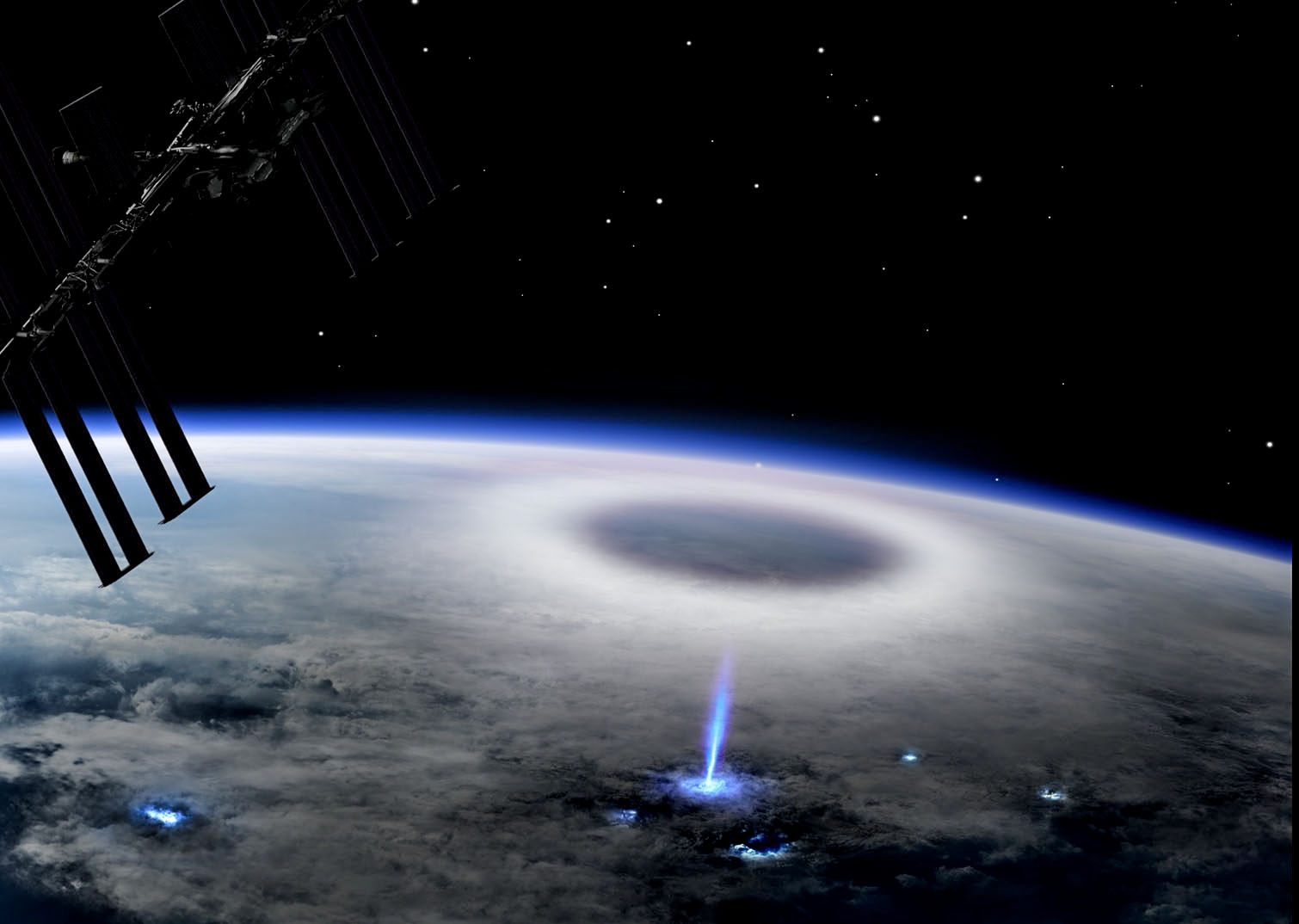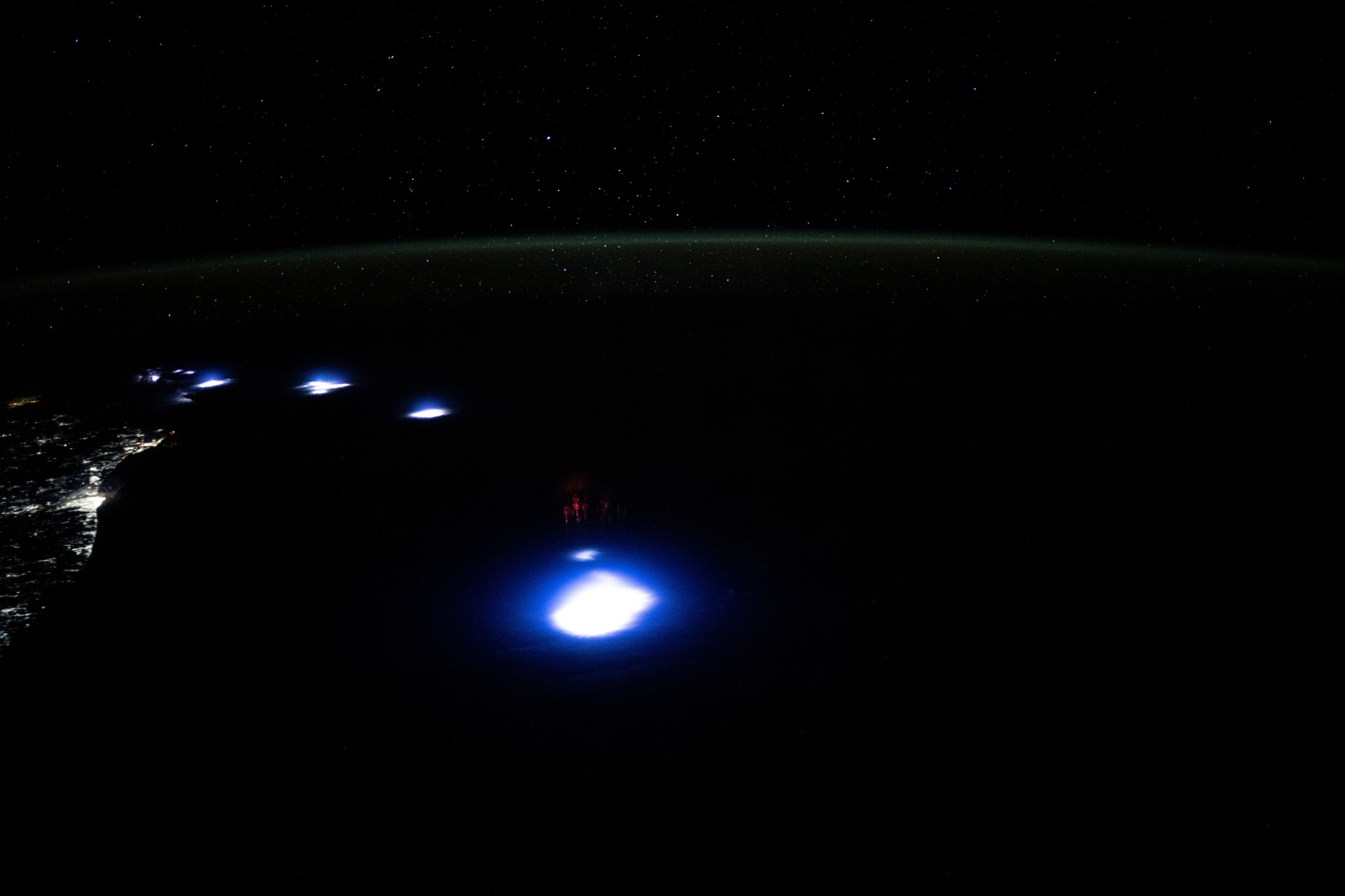
Science in Space June 2025
Scientists use instruments on the International Space Station to study phenomena in Earth's ionosphere or upper atmosphere including thunderstorms, lightning, and transient luminous events (TLEs). TLEs take many forms, including blue jets, discharges that grow upward into the stratosphere from cloud tops, and colorful bursts of energy above storms called Stratospheric/Mesospheric Perturbations Resulting from Intense Thunderstorm Electrification or SPRITES.

TLEs can disrupt communication systems on the ground and pose a threat to aircraft and spacecraft. Understanding these phenomena also could improve atmospheric models and weather predictions. Because these events occur well above the altitudes of normal lightning and storm clouds, they are difficult to observe from the ground. ASIM, an investigation from ESA (European Space Agency), uses a monitor on the exterior of the space station to collect data on TLEs. These data are providing insights into how thunderstorms affect Earth's atmosphere and helping to improve atmospheric models used for weather and climate predictions.
ELVES and coronas
A study based on ASIM data confirmed






